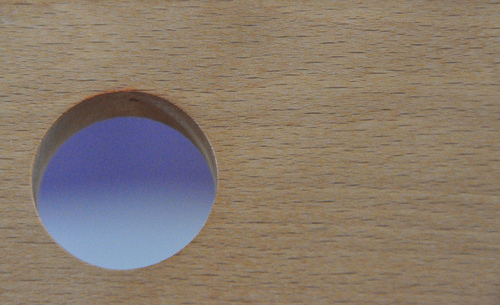I’m having a wonderful time being helpful on SoHelpful.me.
So many different people – with amazing stories – reaching out to and trusting a complete stranger to help them via experience, learning and a diverse perspective.
Recently I met with Greg – a super smart engineer with a really interesting invention who sought to understand how to turn customer interviews into an investment pitch. After a few minutes of conversation and hearing about where he is at with his startup work, I concluded that he has a different and more pressing problem.
He has a solution looking for a problem.
If you use Lean Startup or Steve Blank’s Customer Development approach, you’ll probably be doing it the other way round.
With Customer Development , we find and validate a problem that people have and try and solve it for them. It is a very successful strategy that delivers learning, risk reduction and human connection in a neat little package. But that is not the only way to build a startup. Sometimes – especially if you are a maker – you go ahead and make something and then try and figure out who might use it.
Solutions are always from a problem
I can’t think of anything that is devised as a solution that wasn’t problem driven. It might be a problem you have or one that is well publicised that many people have. It might be real or imagined. The problem might exist today or might be a logical future result of how things are evolving in the present. But solutions mostly always stem from a problem.
What we do in Lean Startup and Customer Development is – through experiments – tests the assumptions we make about the problems.
Work backwards, look for assumptions
As the conversation progressed with Greg, it was clear to both of us that he had built something for his own very specific problem and was now trying to sell it to the wider world. Almost all of the interviews he had were about markets and how to access them. Almost none were about a problem someone had. Even in established markets where you think you have a Unique Selling Point – USP – you are better off validating that your USP is both unique and a selling point – with actual people.
So to help Greg understand his situation better, I asked him to tell me how he thought his product might be used. This is a great technique – tell a story of who uses and how they might use it.
Well, the person that uses this might have a need for this much output and they may want to use that much storage and my product gives them that flexibility
Stop. Rewind. We just found three assumptions.
- “They might need this much output”,
- “They might need that much storage” and
- They value the flexibility.
This gives Greg something to start better customer development – he can take a few steps back and design experiments to test those assumptions.
As he designs his experiment, he can explore where to find people who use similar products or are trying to address the problem but with similar products. Once he’s found them, he can start conversations with them – not about his product – but about his understanding of the problem. Those conversations will inevitably lead to other learning and new assumptions and we continue doing experiments until we have enough validated information to do the next thing.
The moral of the story is…
The fact that you have a product does not mean it is marketable. It means you got over enthusiastic and built something that was scratching your own itch – nothing wrong with that – or you simply wanted to do something fun and interesting – definitely nothing wrong with that!
But reality check yourself. Sure it was fun and it probably was perfect for your problem but unless you establish product-market fit, it is almost certainly not marketable as it stands.
A really straightforward way to determine product-market fit is to turn it into a problem-solution question. Once you positively answer this question with actual data, then the next thing is to determine whether the problem is perceived enough to have people pay money for the solution. Then you have a marketable product. Then you can go try and seek investment and all the other things the cool kids do.
Are you stuck with your startup? Do you have a product that you are struggling to find market fit for? I don’t have any answers, just a difference set of experiences and perspectives through which we might together find answers in. Check me out on http://sohelpful.me/mikesutton and lets get a conversation started.
Featured Image By: Eva Cristescu – CC BY 2.0
